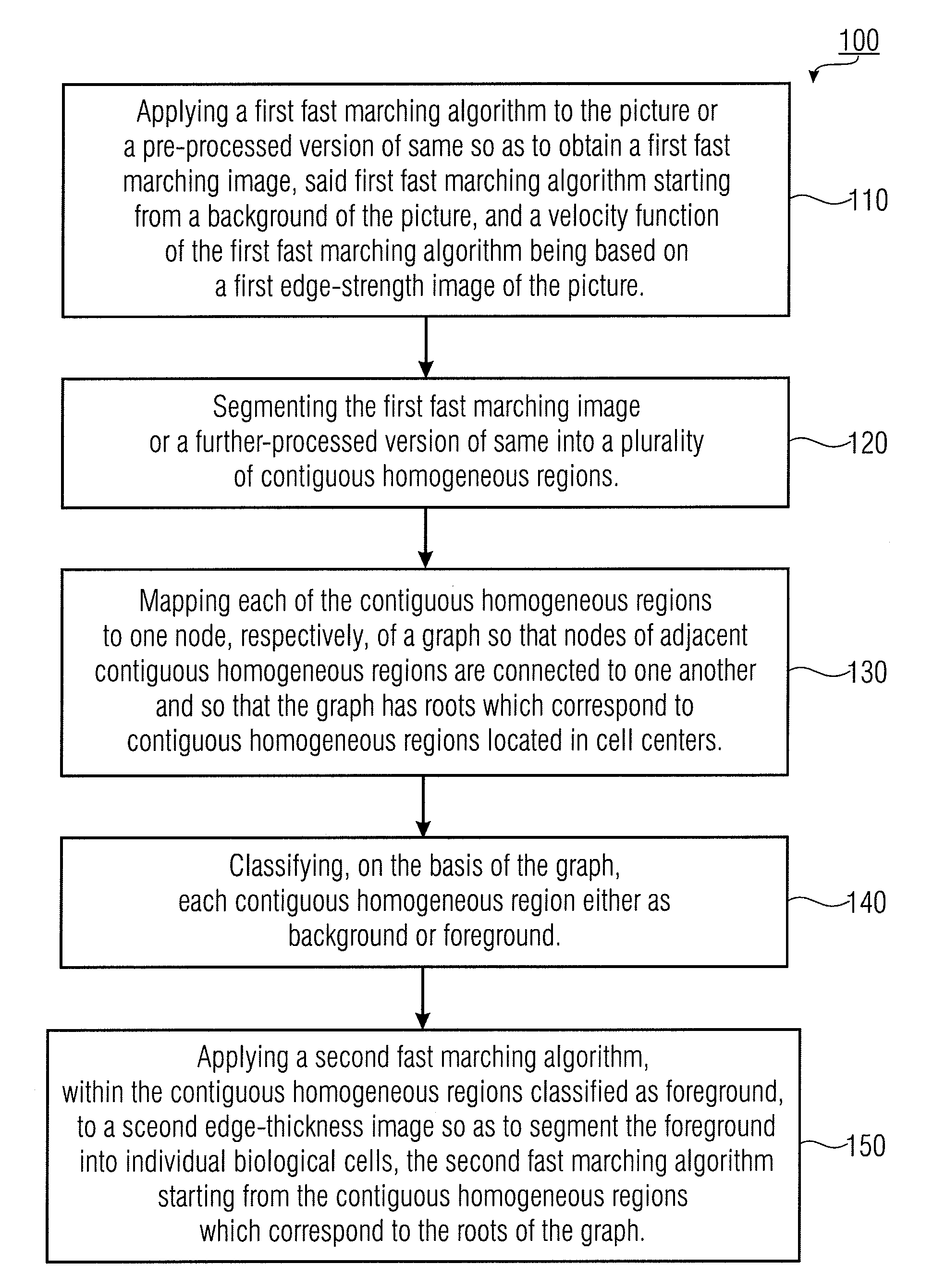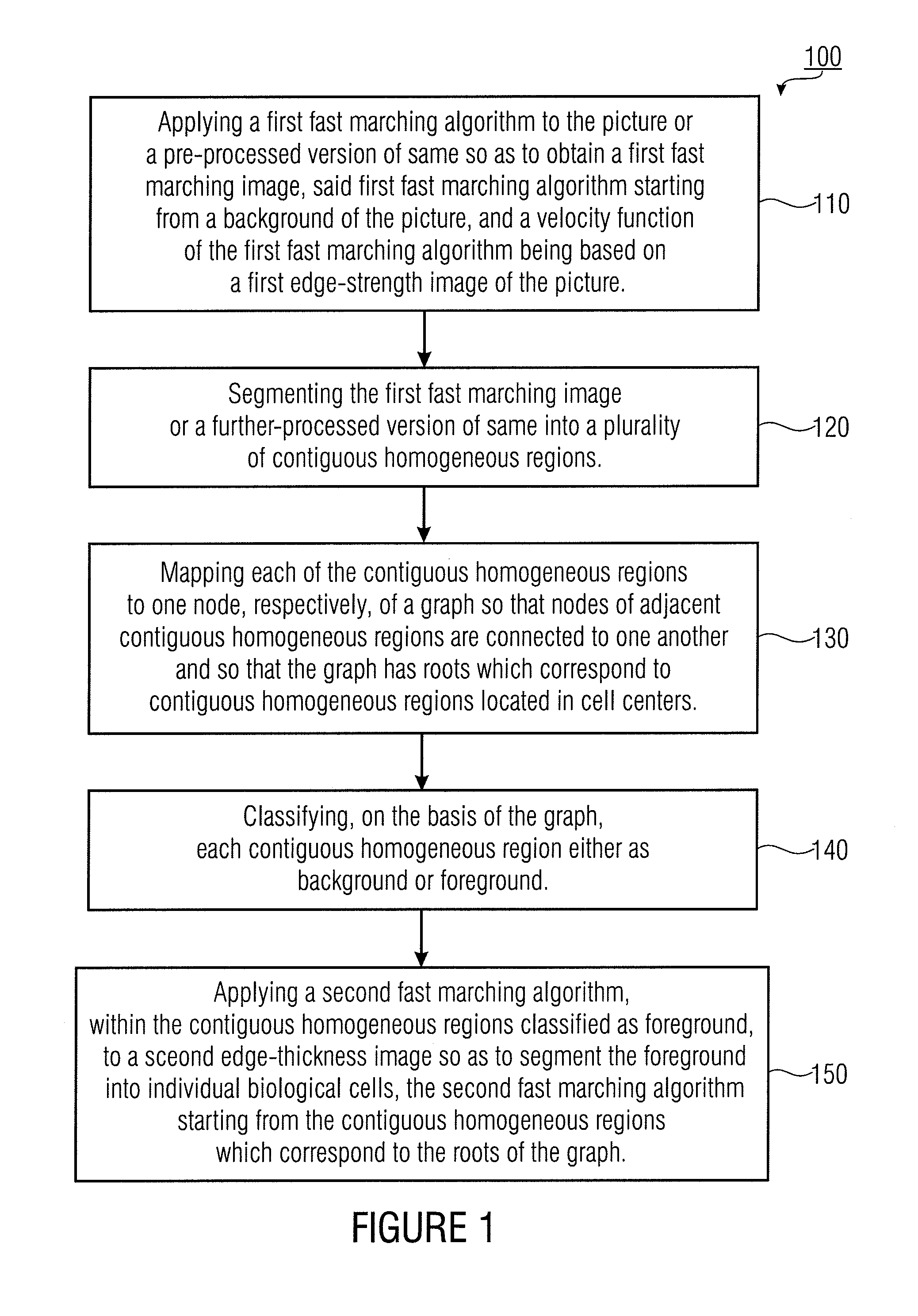Method and Apparatus for Segmenting Biological Cells in a Picture
- Summary
- Abstract
- Description
- Claims
- Application Information
AI Technical Summary
Benefits of technology
Problems solved by technology
Method used
Image
Examples
Embodiment Construction
[0046]Before embodiments of the present invention will be explained in more detail below with reference to the accompanying figures, it shall be noted that elements that are identical or identical in function will be designated by the same reference numerals, and that repeated description of said elements will be dispensed with. Therefore, descriptions of elements having identical reference numerals are interchangeable.
[0047]FIG. 1 shows a flowchart of a method 100 of segmenting biological cells in a picture, so that the biological cells represent a foreground of the picture, in accordance with an embodiment of the present invention. A biological cell may be a white blood corpuscle (leukocyte), a red blood corpuscle (erythrocyte) or any other biological cell. For example, the picture may comprise a plurality of biological cells of different cell types. The cells may be present in so-called cell clusters (cell groups), for example. The picture may be an RGB (red / green / blue) image, a ...
PUM
 Login to View More
Login to View More Abstract
Description
Claims
Application Information
 Login to View More
Login to View More - R&D
- Intellectual Property
- Life Sciences
- Materials
- Tech Scout
- Unparalleled Data Quality
- Higher Quality Content
- 60% Fewer Hallucinations
Browse by: Latest US Patents, China's latest patents, Technical Efficacy Thesaurus, Application Domain, Technology Topic, Popular Technical Reports.
© 2025 PatSnap. All rights reserved.Legal|Privacy policy|Modern Slavery Act Transparency Statement|Sitemap|About US| Contact US: help@patsnap.com



